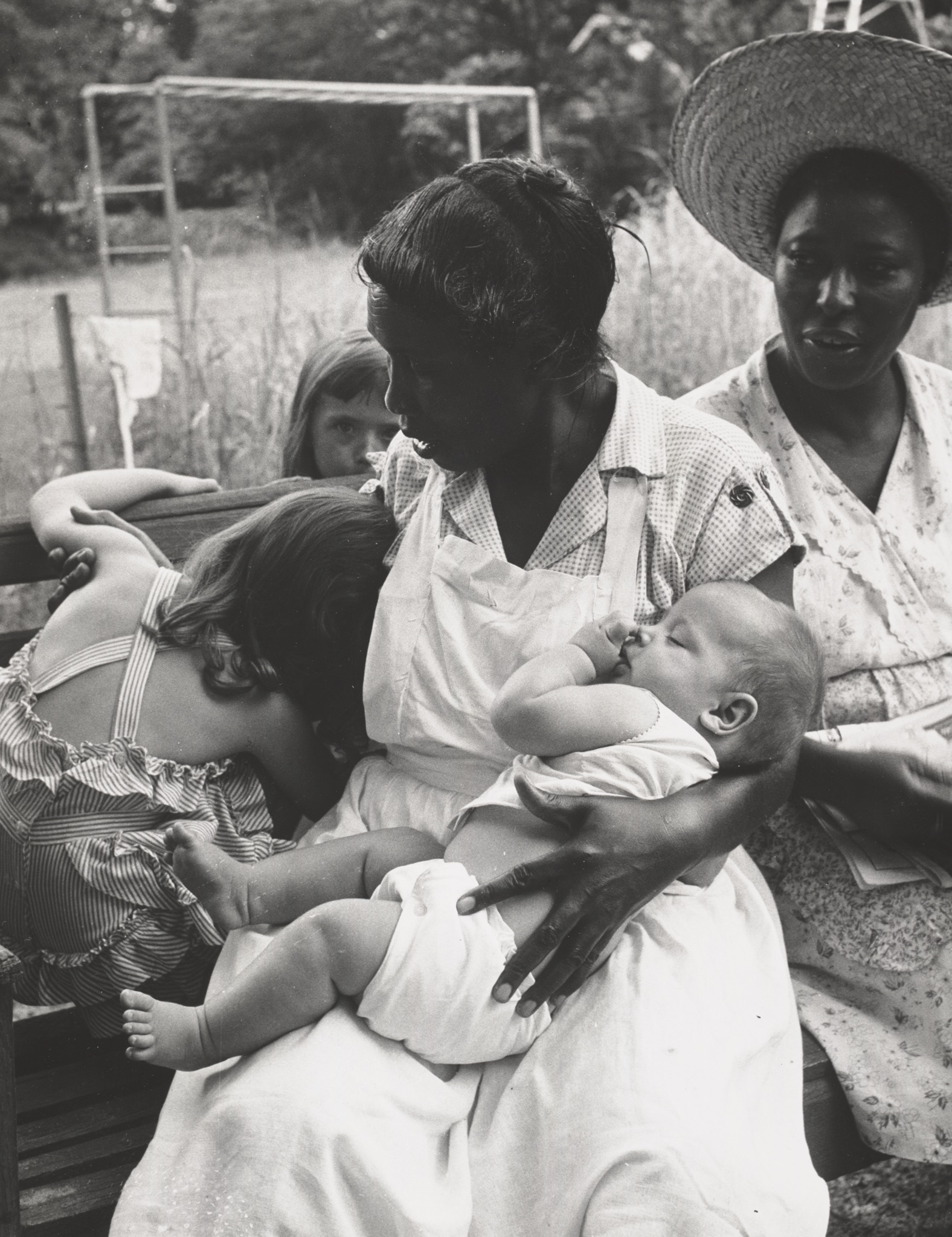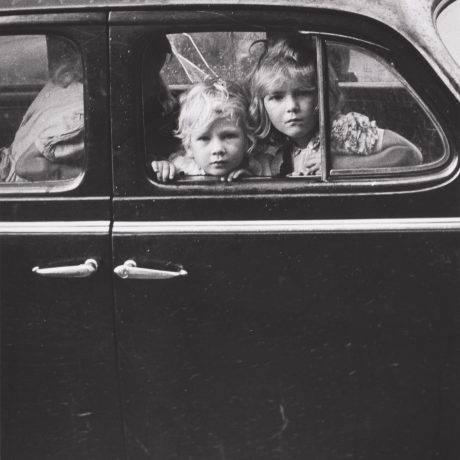
Marion Palfi, Nurse George, Louisville, Georgia, 1946-1949
An infant sleeps peacefully in its nanny’s arms while she simultaneously attends to a fidgeting toddler. Behind the bench on which they sit, another child glares at her minder, while next to her a sun-hatted friend looks on, smirking slightly at the unrest around her.
At the time this photograph was taken, Berlin-born Marion Palfi had been living in the US for at least six years, having fled during the war with her American serviceman husband. The image shows the interest she’d swiftly adopted in the social dynamics of her new country, which were then dominated by racial segregation.
But as a self-described “social-research photographer”, Palfi found subjects far beyond those living at the juxtapositions and tensions of the South. She spent more than 35 years travelling the country, documenting the wide disenfranchisement of African Americans, indigenous peoples, the elderly and the poverty-stricken.
“A self-described ‘social-research photographer’, Palfi found subjects far beyond those living at the juxtapositions and tensions of the South”
What is the relationship between the activist and documentary traditions of photography? Documentarians are often accused of not spending enough time in the communities they shoot. Palfi did, often long outstaying her fellowships in communities ranging from prisons to children’s courts, care centres to ghettoised urban districts.
In 1946, she was awarded a fellowship to research children living in poverty nationwide. Another followed from the Guggenheim Foundation in 1967, this time for a photographic study of indigenous peoples and their dispossession by the US authorities.
She compiled extensive data on the conditions of her subjects. Her work was sponsored by the New York State Committee on Discrimination in Housing and the National Association for the Advancement of Colored People (NAACP), among others.
“The combination of an activist’s drive with an artist’s touch lent her work a rare power”
Do these empirical contexts have an effect on her images? Do the social realities they reveal feel better understood, less transient, than those of a passing image-maker? Her portraits especially lose none of their tenderness for all her knowledge, although the subjects seem heavy with the weight of their historicised subject positions. A Black nurse cradling a white child in a brutally racist society? Some of Palfi’s images need little symbolic explanation.
But as she moved towards more hidden injustices within American society, the combination of an activist’s drive with an artist’s touch lent her work a rare power, one that posterity only helps to emphasise.
Ravi Ghosh is Elephant’s editorial assistant
Freedom Must Be Lived: Marion Palfi’s America, 1940-1978
Phoenix Art Museum, until 2 January 2022
VISIT WEBSITE





